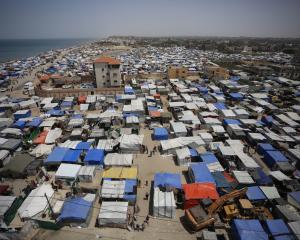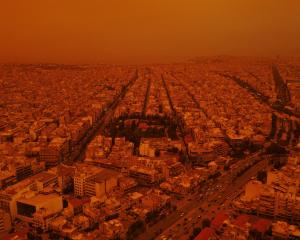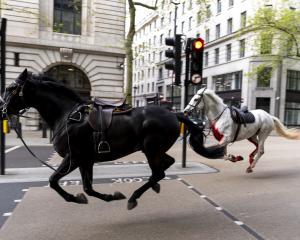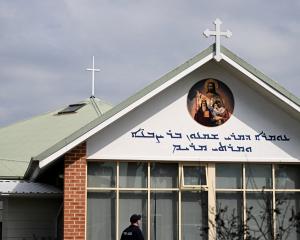Mountain rescue teams, helped by clear weather and armed with shovels, ropes and ice axes, scoured an area buried under snow up to four feet deep for 10 hikers still missing after the early winter blizzard and avalanches hit an Annapurna trekking route popular with backpackers.
Police official Ganesh Rai said 154 people, including 76 foreigners, were rescued on Thursday but the 10 missing were presumed dead.
Coming six months after an ice-avalanche killed 16 sherpa guides on Mount Everest in April, the latest mountain disaster prompted new criticism of the Nepali government for taking climbers' fees but doing too little to mitigate the risks.
A group of seven Canadian trekkers and their Nepali guides were near the high-altitude village of Phu, 150 km (93 miles) northwest of Kathmandu, when an avalanche struck on Wednesday.
Four were killed immediately. The group's guide, Kusang Sherpa, described the sound of snow splitting above and said he and three of the trekkers were able to leap behind the rock.
"I thought it was the last day in my life," Sherpa told Reuters after being evacuated to Kathmandu. "I was lucky that I survived with my three clients."
The snow did not reach the boulder, but they stayed there for about 20 minutes until they were sure the avalanche had stabilised, then walked an hour to a village called Kang, where they telephoned for help and were picked up by a helicopter.
Those killed by the unseasonable weather, brought by the tail end of a cyclone that struck India last weekend, included three Nepali herders, four Nepali guides, two people from Slovakia, three Israelis, three Polish citizens, four Canadians and three Indians. The nationalities of the rest have not been confirmed, officials said.
JACKETS, PACKS SCATTERED AT PASS
October is Nepal's peak trekking season, before the onset of winter when clear skies offer safe access to the mountains and spectacular views, attracting backpackers as well as experienced climbers.
Rescue efforts focused on the highest point on a trail that loops around Annapurna, the world's 10th-highest peak.
The 240-km (150-mile) Annapurna circuit takes almost three weeks to complete, and is perhaps the most popular walking route in the Himalayas. It is dubbed the "apple pie" circuit because teahouses line the route offering cold beer and home baking.
The Nepali government, which collects up to $20 per trekker for a permit, came under fire from hiking officials for doing little to improve safety conditions.
"The government is happy collecting money from trekkers but doing nothing for them. It must now spend the cash for making arrangements for weather forecasts and a quick response for rescue when hikers are in distress," said Keshav Panday, an official of the Trekking Agencies' Association of Nepal.
Nepal is home to eight of the world's 14 highest mountains. Income from tourism - including permit fees for trekkers, who accounted for more than 12 percent of 800,000 tourists in 2013 - accounts for four percent of its gross domestic product.












